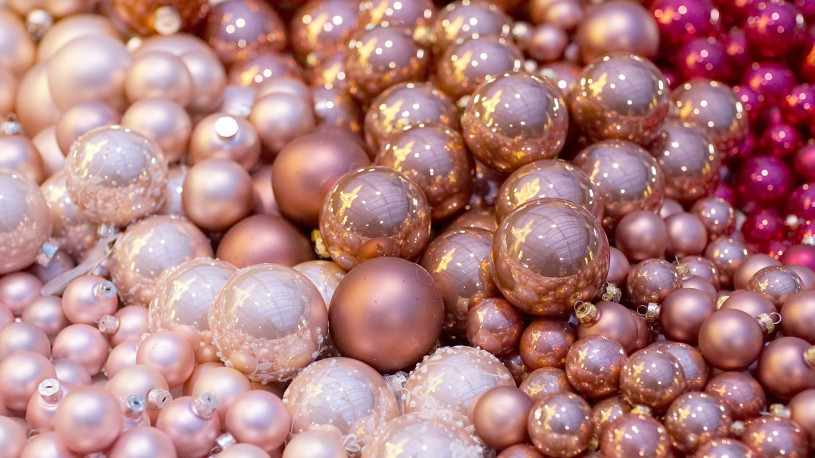-
The Growing Use and Market for Microspheres
 Continue Reading
Continue ReadingToday’s material science is growing at a hyperbolic rate. It seems that every day a ground breaking new substance is being discovered, be it graphene, biological nylon, breathable polyethylene textiles, or biodegradable polymers. But sometimes, older technologies come to the fore as the world finds greater uses for forgotten technology.
One such product is microspheres, a decades old invention that up until today had a set number of uses. But as scientists continue to push the boundaries of chemical engineering, they are finding more and more uses for these tiny balls. It seems that the microsphere industry might be about to really take off.
For example, microspheres have recently been developed as a raw material for the manufacture of cheaper, brighter greenhouses, with global manufacturer 3M recently announcing, that it will add glass microspheres to the polymer films it makes for greenhouses for the agricultural industry.
The reason for this is clear, as industry journal Plastic News, explains, “Using microspheres can allow producers to make more amounts of low density and linear low density film with the same amount of resin.”
Furthermore, adds Fernando Cervantes, Application Development Engineer at 3M, “Microspheres also can provide whiteness to films, allowing for the replacement of titanium dioxide. The materials also can spread light over a greater area, which helps plant growth.”
Whilst the use of microspheres in growing houses will not change the chemical industry, it is a sign of a small revolution taking place. Microspheres are having a larger and more diverse role in modern manufacturing, than ever before. They are being seen as a well-priced and versatile feedstock with all manner of uses. In making lighter car parts for the automobile industry, in being used as to repair weak bones in the pharmaceutical industry, in improving the sealant effect of corks, or in making greenhouses brighter and cheaper, microspheres are showing that they are an industrial raw material to be considered.
Moreover, as more products become dependent on microspheres and as global standards of living rise, possibly the only concern for the market is whether microsphere supply can keep up with microsphere demand.
Photo credit: Apex greenshouses
-
Microspheres; The Small Balls making a Big Impact
 Continue Reading
Continue ReadingMicrospheres have been known for years, but as demand for improved materials and increased functionality from everyday products grows, so too has demand for these strong yet intricate little balls. Microspheres are big.
But what exactly are these tiny materials that are making such a large impression in so many markets?
Well, to quote Webster’s dictionary, they are, “spherical shells that are usually made of a plastic polymer or glass. They have a very small diameter usually in the micron or nanometer range. Sometimes they are filled with a substance (such as a drug) for release as the shell is degraded.”
All of which, is true. Who would want to argue with Webster’s dictionary? But there is in fact much more to microspheres than this simple definition. In the world of modern engineering, microspheres can be made from a variety of materials, for a vast range of uses, function in numerous industries, and are beginning to become an indispensible world commodity.
With this in mind, here are some facts about these powerful spheres.
Glass
One of the best selling forms of microsphere are those made from glass. They are made from a multi-step process, in a manner described by Karen Wood in the industry journal Composites World, as follows; “In general, a multistep process is used to produce high-temperature glass microspheres. Glass is initially produced at high temperatures from soda-lime-borosilicate, after which it is milled to a fine particle size. Trace amounts of a sulfur-containing compound, such as sodium sulfate, are then mixed with the glass powder. The particles are run through a high-temperature heat transfer process, during which the viscosity of the glass drops and surface tension causes the particles to form perfect spheres. Continued heating activates the blowing agent, which releases minute amounts of sulfur gas that form bubbles within the molten glass droplets. The result is a rigid, hollow sphere manufactured with an eye to increasing crush resistance (that is, the ability to withstand external pressure and avoid fracture of the bubbles) without sacrificing low density.”
Plastic
Along with glass, the other most common form of microsphere are those made from plastic. This is largely because polymer microspheres are able to collapse (due to heat and/or pressure) and then bounce back into shape when conditions return to normal.
As Chris Rosenbusch, marketing manager for microsphere manufacturer Expancel Inc., explains, “Excessive pressure will cause the plastic sphere to flatten but not burst. [So]When the pressure is released, the microspheres tend to recover. In a spray-up application, for instance, the microspheres will deform when the resin is pressurized prior to spraying. However, once the material hits the mold and returns to ambient pressure, the microspheres will rebound to their spherical shape.”
The same is true for microspheres used in heat manufactured composites, as Rosenbusch makes clear, saying, “The heat of exotherm during cure can be problematic in composite manufacture. [But] By incorporating plastic microspheres, as the part heats up, the resin is able to expand inward, causing the microspheres to compress. Once the heat dissipates, the spheres rebound.” This gives plastic moulding manufacturers greater control over thermal expansion.
Hollow plastic microspheres have incredibly low densities, with some having specific gravities as low as 0.025. This gives them a very large displacement to weight ratio, making them a popular resource in the manufacture of, amongst other things, spray-up fiber-reinforced thermosetting composites and extrusion applications.
One of the world’s leading manufacturers of microspheres, Expancel (which is part of the Akzo-Nobel group) explains more about the production and many applications of gas filled polymer microsphere in this YouTube video.
Cenospheres
Cenospheres are made from the pulverized fuel ash produced as a waste product from coal-fired power stations. These alumina-silicate balls range in size from 5 to 500 µm and are usually hollow, giving them a very low-density. This makes them very useful for any number of filler purposes for construction products, as well as in the manufacture of composites with “spray-up, hand lay-up, resin transfer molding and syntactic foam applications.”
You can learn more about the manufacture of cenospheres in this YouTube video.
Ceramic
Ceramic microspheres are usually found being used in the paint and coatings industries. Current manufacturers include 3M, which boasts of their use as, “ideal options for increasing hardness, providing gloss control, reducing VOC, increasing filler loadings, and improving hardness and burnish, scrub and abrasion resistance.“
Carbon
A less common form or microsphere, they are made from the carbonization of phenolic microspheres. Similarly pitch can be treated and carbonized for use in a variety of composites and foams. As the industry journal Composite World explains, “Due to their smooth surface, good mobility and thin walls, which permit deformation in response to sound pressure, carbon microspheres have been effectively used in the production of carbon microphones. Also, specially processed pitch carbon microsphere composites are suitable for use as honeycomb fillers for high-temperature or ionizing radiation fields.”
Metal
Aluminum and copper/silver microspheres are currently the most popular, although many companies are researching different metallic constructions to suit specific needs. These include, “polymer-metal spheres that combine a polymer core with a metal shell as well as a product in which multi-walled carbon nanotubes are bonded to the surfaces of polystyrene microspheres.”
Microspheres for All Purposes
One of the key advantages of microspheres as an engineering or production material is their diversity. As already explained, they can be manufactured from numerous materials. They can be either solid or hollow, have porous or non-porous walls, have low density and mass, or be made with thick walls for maximum strength. They can be crushed and heated and still return to shape, as well as be filled with gas or other chemical, or coated with any number of products.
With such a wide variety of specifications, it is no wonder that microsphere manufacturers are eager to boast of their products adaptability. Indeed, it is no wonder that the market for this wonder-product is growing.
Photo credit: Monika Mekala
-
What can the Chemical Industry Learn from an Unbreakable Watermelon?
 Continue Reading
Continue ReadingThe Internet is full of weird and wonderful videos, but alongside a 415ft basketball shot and the world record 543,210 domino topple, is the sight of a watermelon hitting the tarmac after a 43m (148ft) fall without breaking.
Thanks to a polymer coating called LINE-X, the watermelon simply bounced. The test team then failed to break open the melon with an axe, before finally cracking the fruit open with an angle grinder.
With over 800,000 views in less than a week, you can see the strange power of polymer coatings on YouTube here.
While the Internet is raging about this new discovery, it is taking wiser minds inside the polymer and coating industries to highlight the fact that the protective spray has been on the market for over a decade. So the question is; why isn’t the chemical industry doing more to promote the amazing science and material advances that it is making?
With Polymer Coatings like this; Why Wait for YouTube Watermelons?
Some pop-science YouTubers are making headway. For example, the YouTube channel Veritasium has almost 4 million subscribers. Its host, Derek Muller, is no fool for science, having earned his PhD from the University of Sydney, and he uses his knowledge to good effect, by adding science to the fun, or maybe fun to the science. Either way, his latest clip gives some explanation to the fascination of the unbreakable watermelon, describing the coating as, a mix of, “Diphenylmethane-4,4’-diisocyanate (or MDI for short) and a plasticizer, namely alpha-(2-aminomethylethyl)-omega-(2-aminomethylethoxy)-poly(oxy(methyl-1,2-ethanediyl)); a long name for a long chain molecule, which in reality would have an even longer name than this.”
Another popular science website is called Futurism. Its covers many different fields, but its Industrial Rev 2.0 page is highly recommended, focusing as it does on real world applications for material science. For example, on the watermelon polymer coating story, it adds that, “Tests conducted by the Air Force Research Laboratory (AFRL) and U.S. Army Corps. of Engineers (USACE) in 2006 showed that LINE-X-protected buildings could withstand up to 1,100 pounds of explosives. The inner walls of the Pentagon are already lined with the material to help it withstand attacks from terrorists or other threats, but civilian structures of the future could potentially use it to help combat the effects of natural disasters like hurricane or earthquakes.”
Interesting, real world information on modern industrial chemical applications with a positive impact; now there’s a thought!
Instead, so much news on chemical products refers to the potential damage they may or may not cause. Such as the website of the Environmental Working Group, that argues of the health risks of the watermelon coating’s perfluorochemicals.
Possibly any chemical product named alpha-(2-aminomethylethyl)-omega-(2-aminomethylethoxy)-poly(oxy(methyl-1,2-ethanediyl)) will cause issues.
Maybe this is the heart of the problem. For 500 years, the scientific world has attempted to keep its industry elitist, with its use of Latin and its closed communities, such as the Royal Academy.
Should the Modern Chemical Industry be More ‘Out There’ with What it can Do?
Chemical industry insiders already know what a $3 trillion industry can achieve. It is an industry that helped build drivable 3D printed cars, helped put mankind into space and can save the world from climate change. So surely swaying public opinion would be easy. After all, the beverage industry persuaded as to pay for bottled water.
The Wall Street Journal reported last year of the cuts that some of the larger multi-nationals chemical companies were making in their advertising budgets. Stating that, “Procter & Gamble Co. is preparing to make deep cuts in the number of advertising agencies it works with, hoping to save up to half-a-billion dollars in [advertising] fees. [While] Unilever, which spent roughly $7 billion on advertising and marketing last year, is currently reviewing its global media-buying business.”
If a chemical supplier has $7 billion to spend on helping consumers choose a brand that is likely similar to other brands, then think how effective it could be at broadcasting a positive message about the chemical industry with all the good that it does.
Now that we are in the age of the Internet, isn’t it time we that began to invest more in dismantling the fear around chemistry and the chemical industry? After all, it didn’t take more than a sack full of watermelon’s to show the power of the polymer coating industry.
Photo credit: nerdist.com
